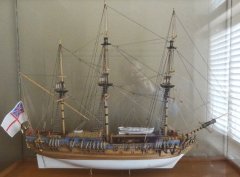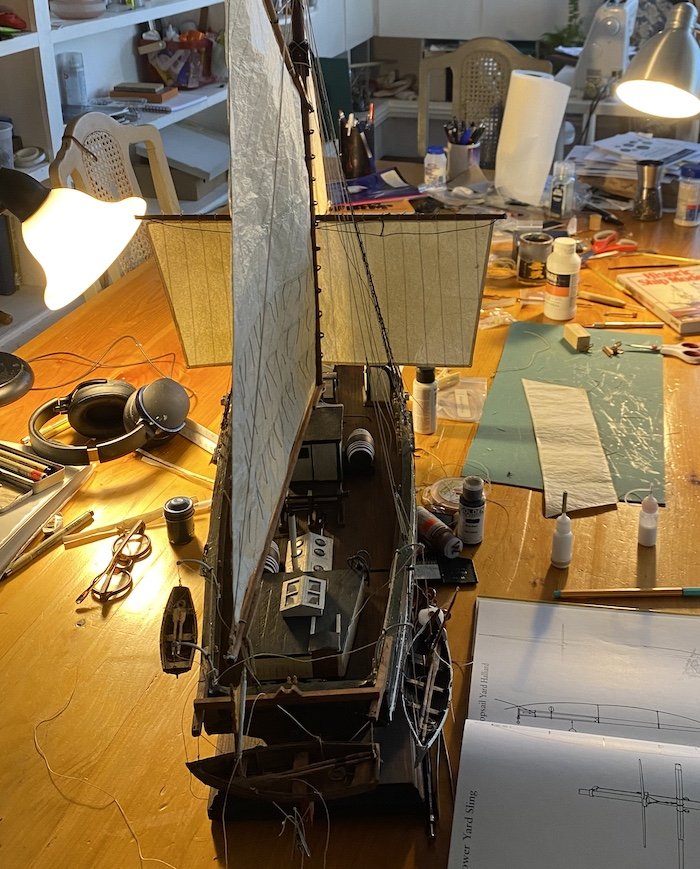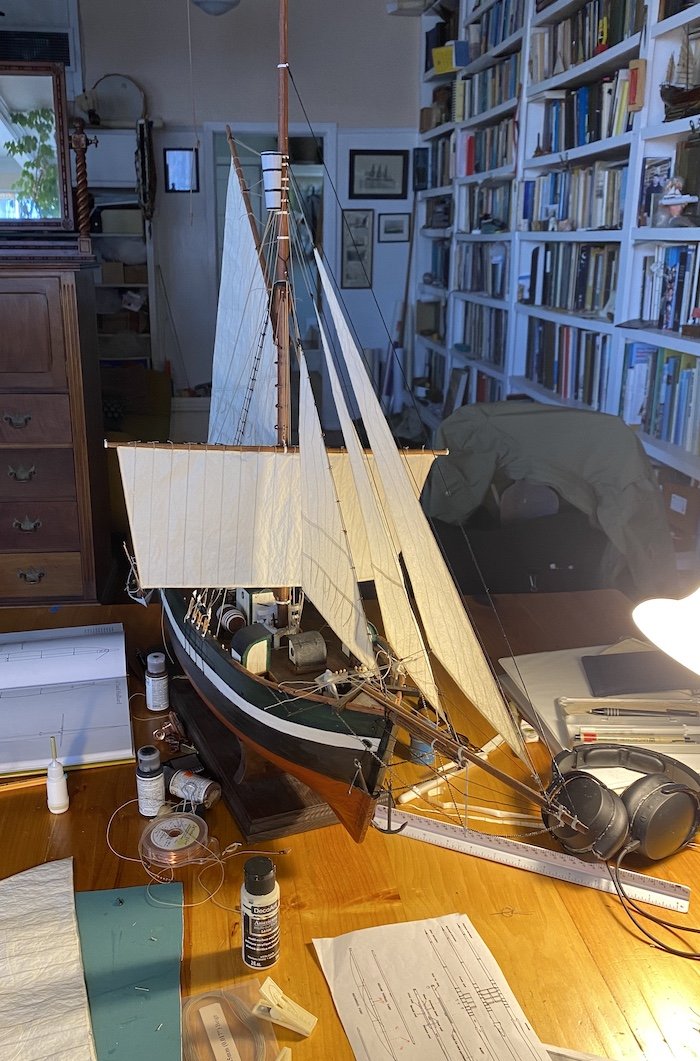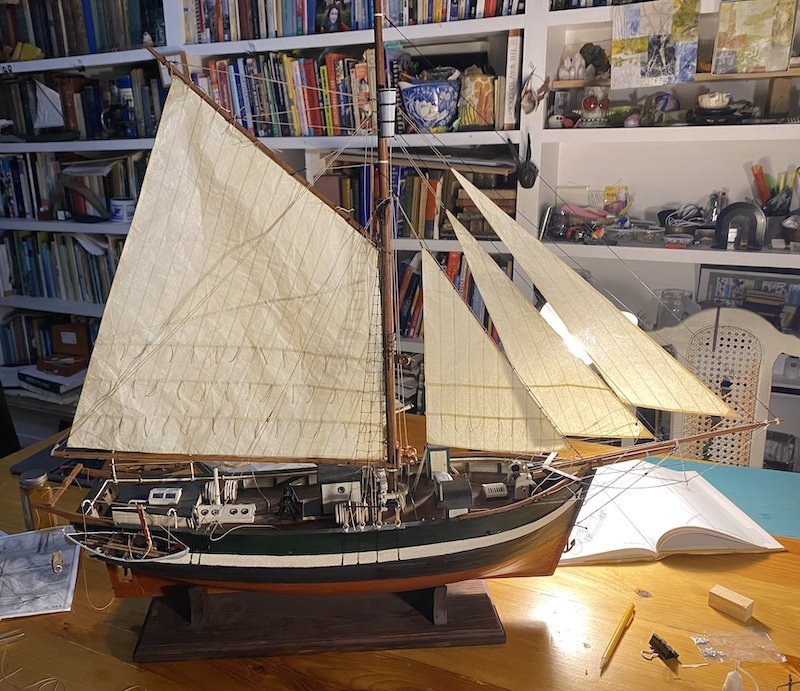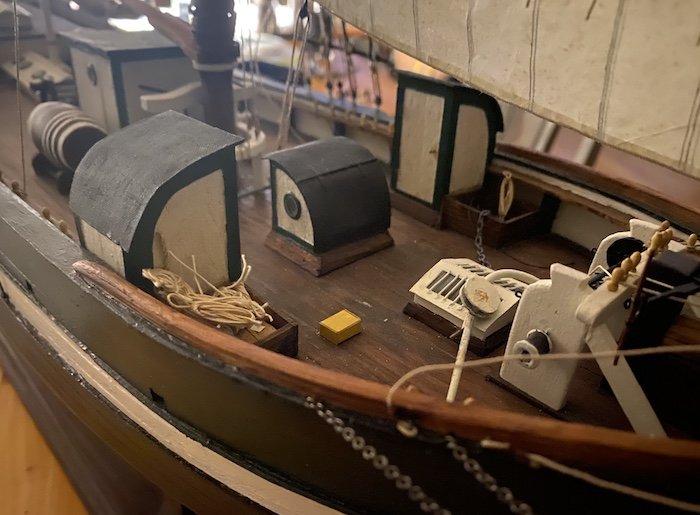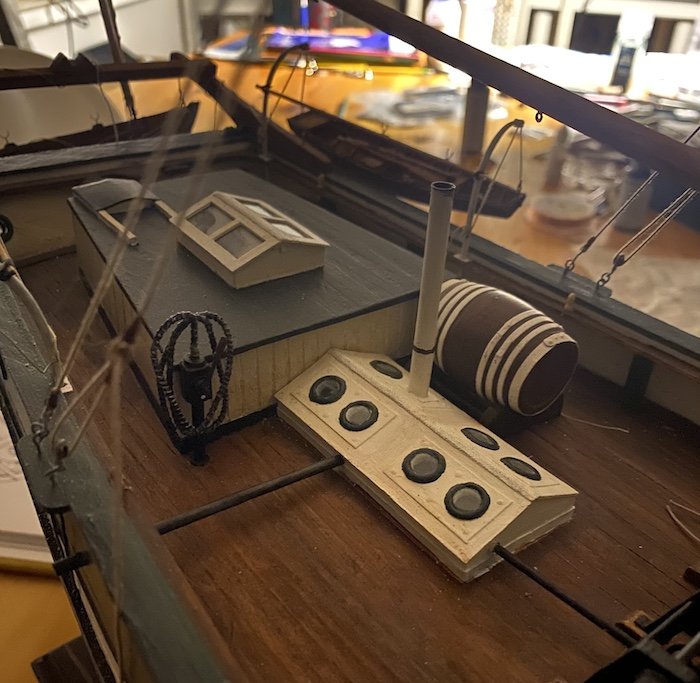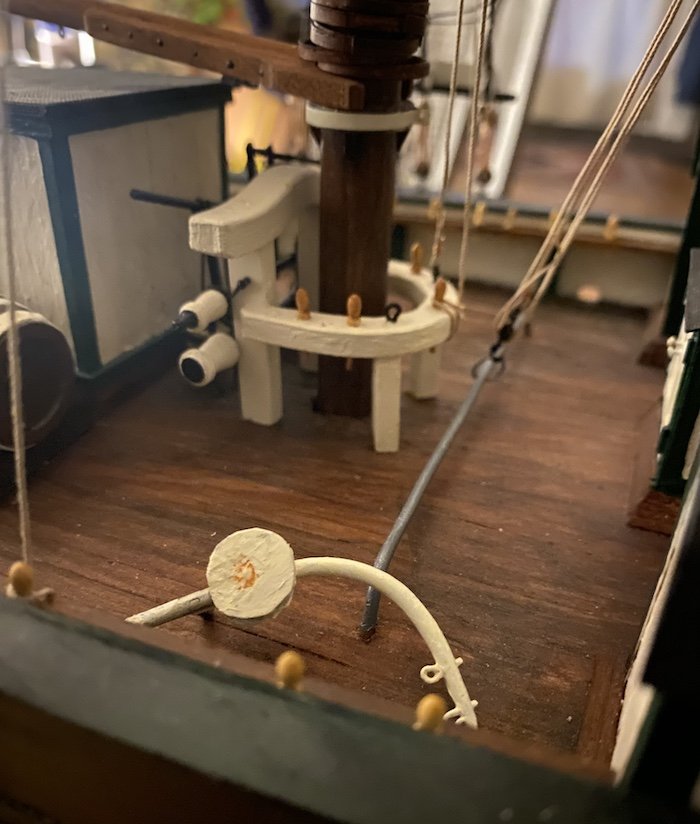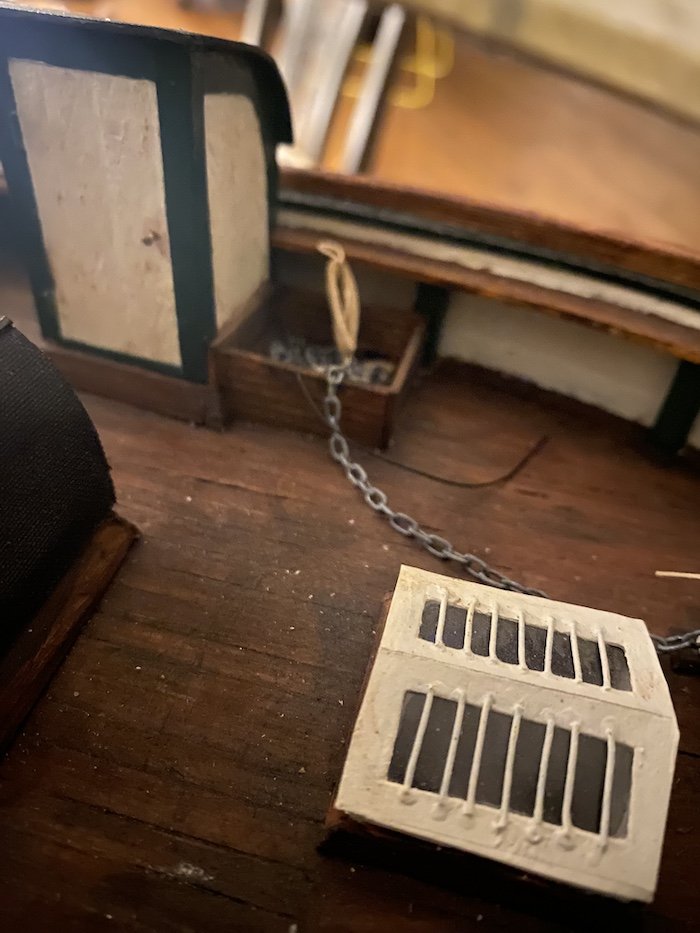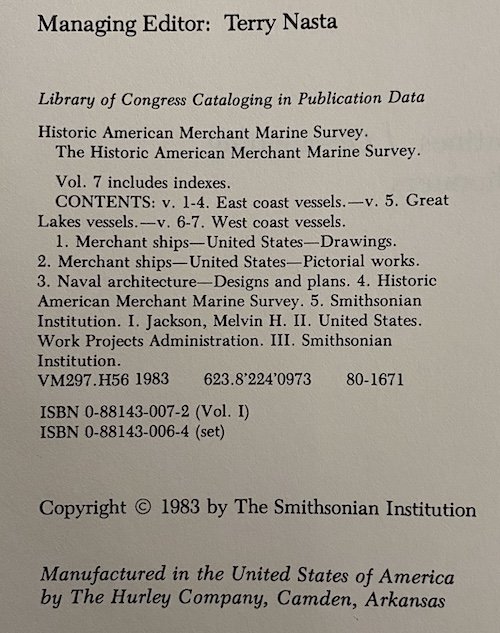-
Posts
457 -
Joined
-
Last visited
About Harvey Golden

Contact Methods
-
Website URL
www.traditionalkayaks.com
Profile Information
-
Location
Astoria & Portland, Oregon
-
Interests
Working boats, Indigenous watercraft, U. S. Maritime Commission Ships. Scholarly interest in kayaks from the Arctic hunting tradition.
Recent Profile Visitors
-
 Harvey Golden reacted to a post in a topic:
Hello everyone
Harvey Golden reacted to a post in a topic:
Hello everyone
-
 Harvey Golden reacted to a post in a topic:
Interesting ship related book with interesting signature inside
Harvey Golden reacted to a post in a topic:
Interesting ship related book with interesting signature inside
-
 Harvey Golden reacted to a post in a topic:
Simple, low cost, small thimbles
Harvey Golden reacted to a post in a topic:
Simple, low cost, small thimbles
-
 Harvey Golden reacted to a post in a topic:
Gjoa 1872 by Jond - 1:48 scale - Amundson's Cutter
Harvey Golden reacted to a post in a topic:
Gjoa 1872 by Jond - 1:48 scale - Amundson's Cutter
-
 Harvey Golden reacted to a post in a topic:
Interesting ship related book with interesting signature inside
Harvey Golden reacted to a post in a topic:
Interesting ship related book with interesting signature inside
-
 Harvey Golden reacted to a post in a topic:
Interesting ship related book with interesting signature inside
Harvey Golden reacted to a post in a topic:
Interesting ship related book with interesting signature inside
-
 Harvey Golden reacted to a post in a topic:
Billy 1938 by Keith Black - 1:120 Scale - Homemade Sternwheeler
Harvey Golden reacted to a post in a topic:
Billy 1938 by Keith Black - 1:120 Scale - Homemade Sternwheeler
-
 Paul Le Wol reacted to a post in a topic:
Gjøa 1872 by Harvey Golden - Roald Amundsen's Cutter built at Rosedahl, Norway
Paul Le Wol reacted to a post in a topic:
Gjøa 1872 by Harvey Golden - Roald Amundsen's Cutter built at Rosedahl, Norway
-
 Siggi52 reacted to a post in a topic:
Gjøa 1872 by Harvey Golden - Roald Amundsen's Cutter built at Rosedahl, Norway
Siggi52 reacted to a post in a topic:
Gjøa 1872 by Harvey Golden - Roald Amundsen's Cutter built at Rosedahl, Norway
-
 sheepsail reacted to a post in a topic:
Gjøa 1872 by Harvey Golden - Roald Amundsen's Cutter built at Rosedahl, Norway
sheepsail reacted to a post in a topic:
Gjøa 1872 by Harvey Golden - Roald Amundsen's Cutter built at Rosedahl, Norway
-
 Dr PR reacted to a post in a topic:
Gjøa 1872 by Harvey Golden - Roald Amundsen's Cutter built at Rosedahl, Norway
Dr PR reacted to a post in a topic:
Gjøa 1872 by Harvey Golden - Roald Amundsen's Cutter built at Rosedahl, Norway
-
 JacquesCousteau reacted to a post in a topic:
Gjøa 1872 by Harvey Golden - Roald Amundsen's Cutter built at Rosedahl, Norway
JacquesCousteau reacted to a post in a topic:
Gjøa 1872 by Harvey Golden - Roald Amundsen's Cutter built at Rosedahl, Norway
-
 wefalck reacted to a post in a topic:
Gjøa 1872 by Harvey Golden - Roald Amundsen's Cutter built at Rosedahl, Norway
wefalck reacted to a post in a topic:
Gjøa 1872 by Harvey Golden - Roald Amundsen's Cutter built at Rosedahl, Norway
-
 druxey reacted to a post in a topic:
Gjøa 1872 by Harvey Golden - Roald Amundsen's Cutter built at Rosedahl, Norway
druxey reacted to a post in a topic:
Gjøa 1872 by Harvey Golden - Roald Amundsen's Cutter built at Rosedahl, Norway
-
 druxey reacted to a post in a topic:
Gjøa 1872 by Harvey Golden - Roald Amundsen's Cutter built at Rosedahl, Norway
druxey reacted to a post in a topic:
Gjøa 1872 by Harvey Golden - Roald Amundsen's Cutter built at Rosedahl, Norway
-
 druxey reacted to a post in a topic:
Gjøa 1872 by Harvey Golden - Roald Amundsen's Cutter built at Rosedahl, Norway
druxey reacted to a post in a topic:
Gjøa 1872 by Harvey Golden - Roald Amundsen's Cutter built at Rosedahl, Norway
-
 druxey reacted to a post in a topic:
Gjøa 1872 by Harvey Golden - Roald Amundsen's Cutter built at Rosedahl, Norway
druxey reacted to a post in a topic:
Gjøa 1872 by Harvey Golden - Roald Amundsen's Cutter built at Rosedahl, Norway
-
Almost time to relinquish the dining room table-- I got a lot done though! I'm so pleased with how the sails turned out that I decided to go all out with the rig, so the square, square topsail, and the sprit topsail will be set; Gjøa will be in full bloom by spring! One little hitch discovered this morning. . . I set up the mast's pinrail like how she is in the museum today, but there are apparently a number of pins missing. The old Model Shipways plans shows many more (and their functions), AND I ran out of pins (ordered, though). So, back to the shelf for a while. H-
-
This is great to see! I didn't know about his book on Clinker boats, but am a big fan of his "Working Boats of Britain"-- his pen and ink drawings are about as good as they get (up there with Adkins, Manning, Paris, Af Chapman, etc.). My only (successful) experience with Lapstrake is a finger-size pram for my Gjøa-- I'd like to brush up on it, and it sounds like that's the perfect book and method to use. Will follow along.... Best, H-
-
The mainsail is up! Looking like only minimal adjustments will be needed, mostly just tightening thing up as the boom and gaff hang nicely. Just one hoop glued so far, and just a few robands tied. Peak, Tack, and Clew temporarily fastened and the throat temporarily pinned. Feels nearly done, but a lot more to tend to: matte-ing out glue spots, gluing down falls and attaching hanks to pins, securing both anchors, hanging the rope ladder, tying off the boat lines, adding the main-sheet, and I still have to see about whether or not this ship had a rudder. . . H-
-
No progress worth showing, but some progress made. Lots of adjusting this and that and doing this here and that there . . . and picking up half a dozen loose parral beads from the gaff after they came cascading down from on high (not sure I found them all, but I have several lifetimes' supply). Pretty sure the main gets hung tomorrow, but who knows? Anyhow, I did take some decent photos; all that lack of sanding, using crap wood, and blotchy paint seems to add a bit of je ne sais quoi. H-
-
Thank you Jon! At this stage of building a scratch-built model, one might get the impression I know what I'm doing . . . Rigging in general is beyond my comfort zone, and everything you see is new to me. Along with the knowledge and generosity of others on this forum, the following three things were of great help in executing the rigging: 1. The .pdf "Jakt <Jelse>" https://fartoyvern.no/wp-content/uploads/2022/08/5-21_Jelse_THD_v1_MH-SS.pdf 2. Copies of the old Model Shipways plans for the Gjøa-- particularly the Belaying/sheeting diagram and the details of gaff, boom, yard, etc. 3. Lennarth Petersson's "Rigging: Period Fore-and-Aft Craft." Of the latter reference-- it covers three regional craft, none of which are from Norway, but it illustrates the concepts, purposes, and terminology very clearly, and helps corroborate matters from the other two sources. It's also fascinating to see how different people found differing solutions to the same requirements. FWIW, the British ship in Petersson seems to be the closest to the Gjøa w/r to rigging execution. I hope this is helpful, as is this thread-- I'm very aware there must be mistakes in my project though; I rather wish I was following your path! H-
-
A week-long window of free access to the dining room table has just opened! The model is 40" from tip of the bowsprit to the tender on stern davits-- my "official" model work bench is 41" wide, so this is a rare chance to get some serious work done, with access to both sides. The main goal is to get the main sail on. The last four mast hoops are on-- I did not thread them onto the mast before attaching all the foresail rigging, crow's nest, shrouds, etc., so I cut them open and then glued them back together around the mast. The boom and gaff are already fitted out with blocks, cleats, etc. I also got the parral beads on the gaff and have rigged it into temporary position with the throat halyard and peak halyard. Also, the rope ladder for the crow's nest is ready to hang. Also, I've fitted those puzzling Ørefiken thingies-- shown below, though not rigged-up yet, nor properly attached (will be lashed further). Special thanks again to Steggin, who shared the source that provided the answer of how the Ørefiken was set-up (see .pdf he links to at bottom page 3 here). With luck, I'll be attaching the mainsail tomorrow or so; still have to get the topping lift set up.
-
Not to be left out, I also have a suggestion 😉 I also would hand letter it, but to ensure it has the odd character of the original's lettering and mis-matched weight, etc. I would trace it onto silkspan or tracing paper and then paint the back side (to form the background color). For tracing, I'd get rid of the perspective/foreshortening by simply stretching the image to what looks reasonable-- below is a simple example (it can be printed to proper size, or if you are brave, you can use your computer screen as a "light box"). A Pigma Micron or similar quality pen would make short work of it, even in tiny scale. Just thoughts- H-
-
The Historic American Merchant Marine Survey volumes have a few color plates in them-- rendered artistically by the surveyors. I don't recall which volume, but they show a nice though not extensive range of colors on various parts of certain boats (fishing craft and/or coasters from the 19th C, [though undoubtedly 'touched-up' by the time of the survey] if I recall). Best, H-
-
Hi Jond! Nice to see another scratch built Gjøa on the ways! My 1/32 version is a bit stagnant at the moment, though nearing completion. Yours is looking great, and I envy the slightly smaller scale! Best, Harvey
- 44 replies
-
- Northwest passage
- Norway.
-
(and 2 more)
Tagged with:
-
Harvey Golden changed their profile photo
About us
Modelshipworld - Advancing Ship Modeling through Research
SSL Secured
Your security is important for us so this Website is SSL-Secured
NRG Mailing Address
Nautical Research Guild
237 South Lincoln Street
Westmont IL, 60559-1917
Model Ship World ® and the MSW logo are Registered Trademarks, and belong to the Nautical Research Guild (United States Patent and Trademark Office: No. 6,929,264 & No. 6,929,274, registered Dec. 20, 2022)
Helpful Links
About the NRG
If you enjoy building ship models that are historically accurate as well as beautiful, then The Nautical Research Guild (NRG) is just right for you.
The Guild is a non-profit educational organization whose mission is to “Advance Ship Modeling Through Research”. We provide support to our members in their efforts to raise the quality of their model ships.
The Nautical Research Guild has published our world-renowned quarterly magazine, The Nautical Research Journal, since 1955. The pages of the Journal are full of articles by accomplished ship modelers who show you how they create those exquisite details on their models, and by maritime historians who show you the correct details to build. The Journal is available in both print and digital editions. Go to the NRG web site (www.thenrg.org) to download a complimentary digital copy of the Journal. The NRG also publishes plan sets, books and compilations of back issues of the Journal and the former Ships in Scale and Model Ship Builder magazines.

